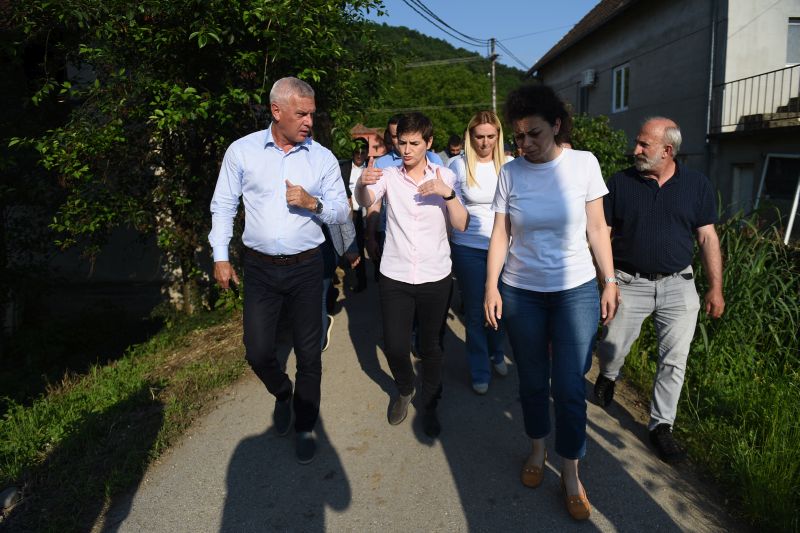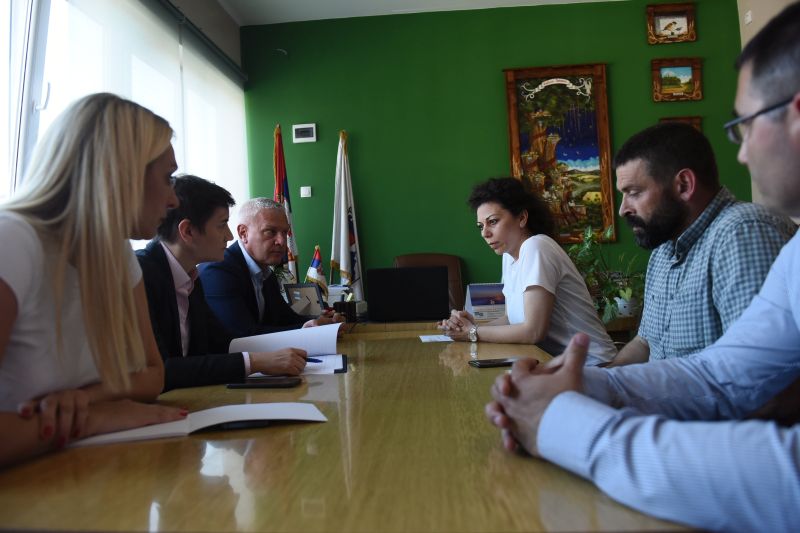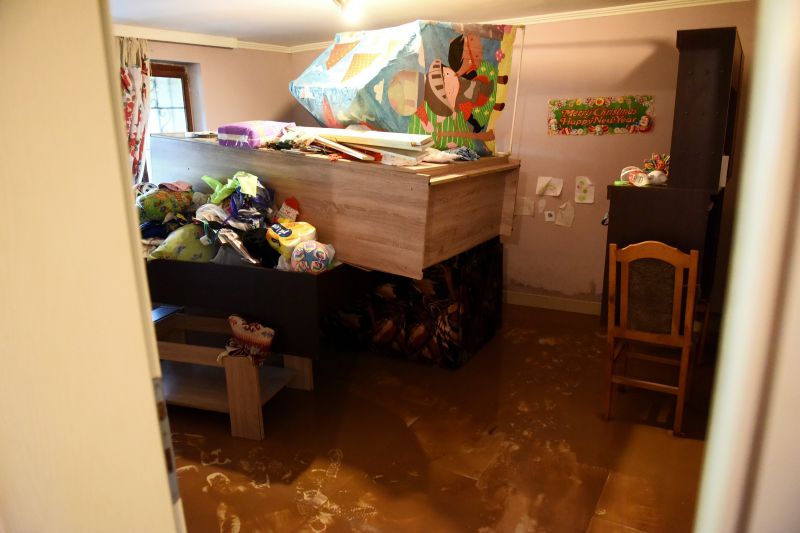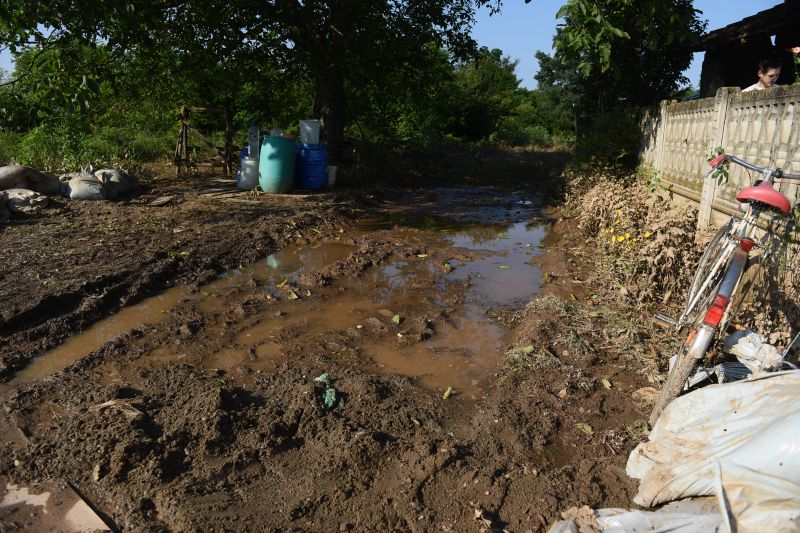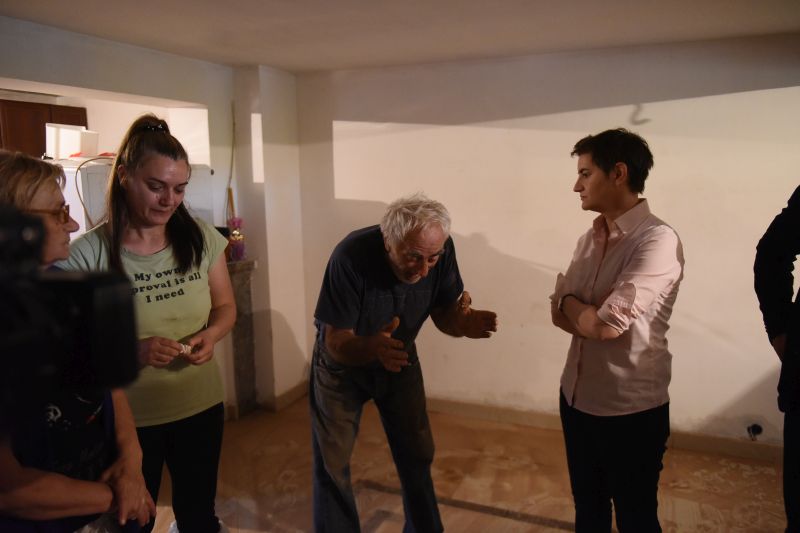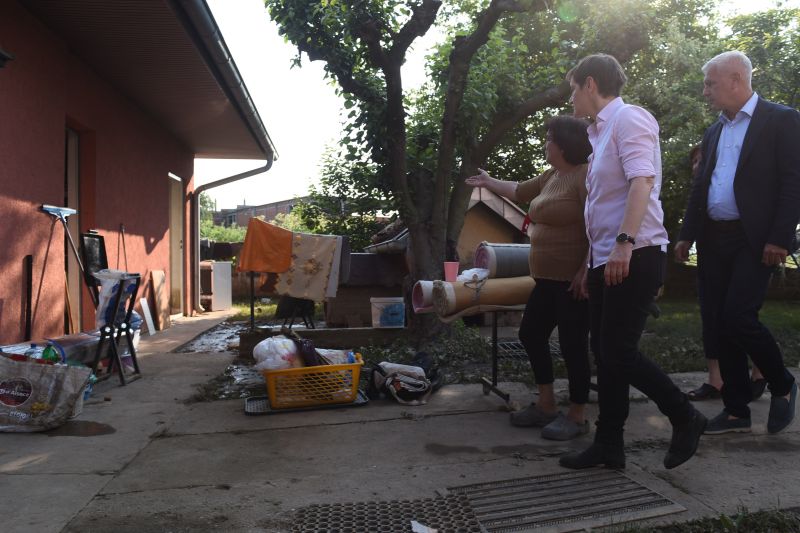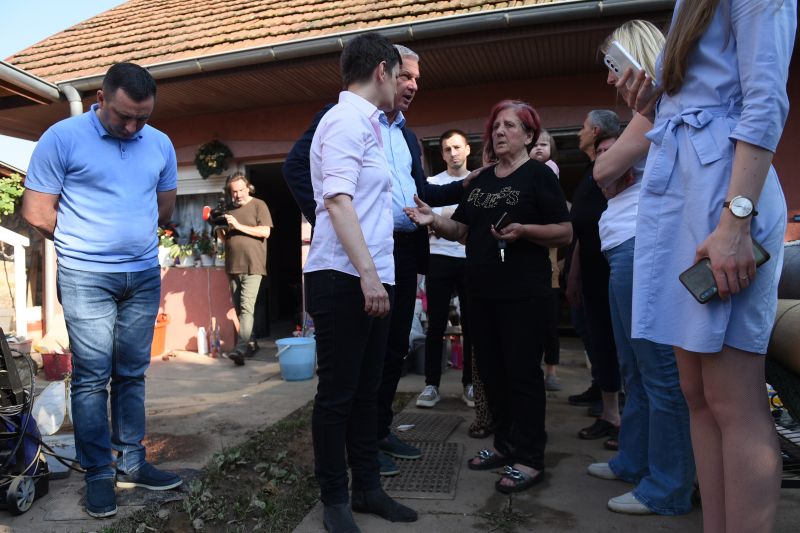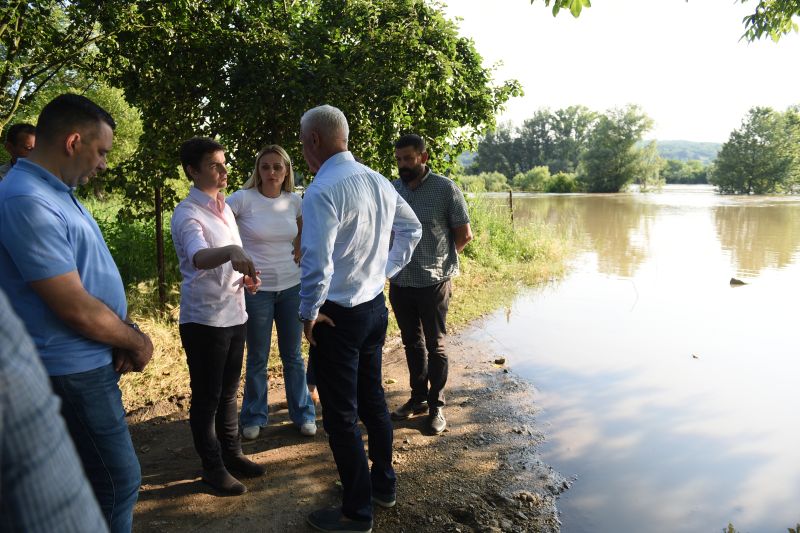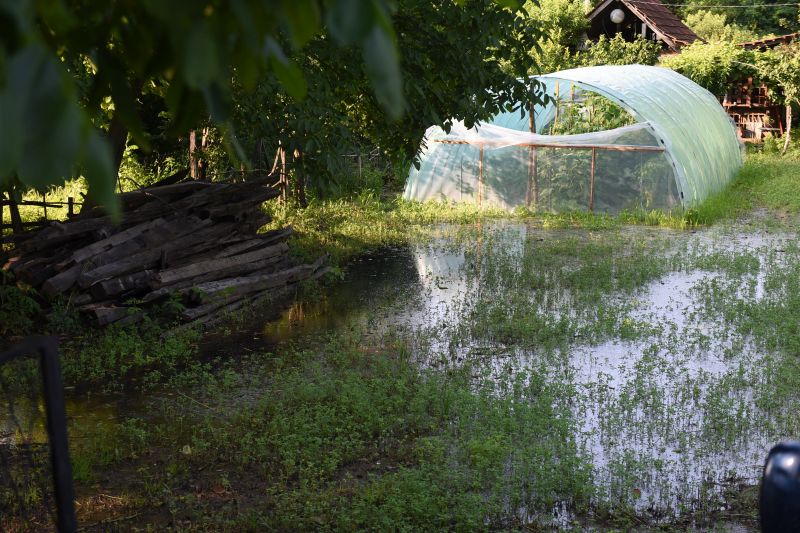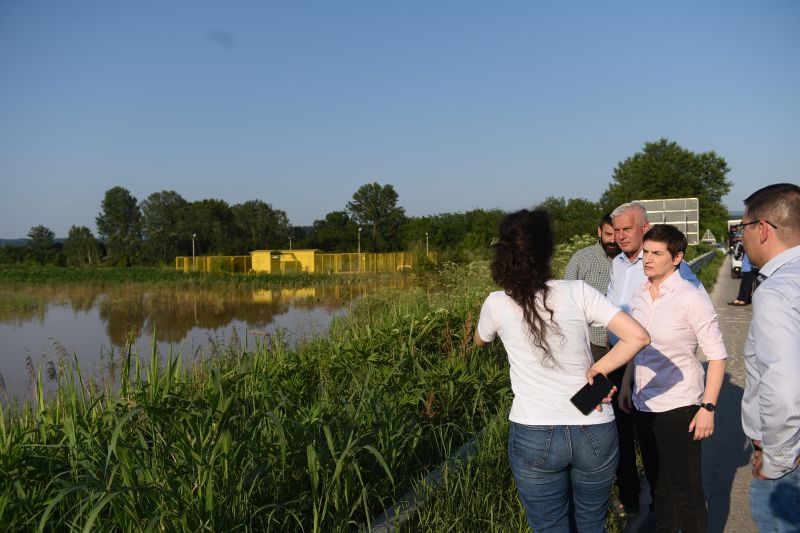Prime Minister Ana Brnabic visited Cicevac, where she discussed the consequences left by the recent floods in the municipality with the locals and the municipality's president, Mirjana Krkic.
- Serbia
Get to know Serbia
- Citizens
Culture and science
Health services
Pension and disability insurance
- Business
Employment
Economy
- Media
- Government
- Contact
Keep in touch
Keepin touch
Whether you have a question, comment, suggestion or any problem in the purview of the government, send us your message and we will try to respond as soon as possible. If your problem is not in our purview, we will forward your message to the relevant institution.
Repairing damage in flooded areas in most efficient way
During the visit, Brnabic said that the government of Serbia will work towards compensating all the damages to the residents who have been affected by the floods in the most efficient way possible.
The Prime Minister stated that currently, an inventory and assessment of the damages are being conducted, which are of considerable magnitude. She emphasised that as many as 82 bridges in Serbia have been damaged or destroyed, along with 22 water supply systems, 13 sewage systems, over 200 local roads, and more than 750 residential buildings, the largest number being in the territory of Jagodina.
She pointed out that these figures are as of today at 10 o'clock and unfortunately, they are not final. She highlighted that the government, together with all local self-governments where a state of emergency has been declared, will work on compensating the damages, especially in terms of crops.
Brnabic expressed her satisfaction with visiting the affected households and talking to the families, demonstrating that the state is there for them and that together, we will overcome this situation.
The Prime Minister emphasized that the state, together with the Public Enterprise "Srbija Vode", will work on the restoration of damaged embankments. She added that a clear and defined plan and roadmap for future construction needs will be established.
This is something we will face in the future due to climate change. The amount of precipitation in certain parts of Serbia in the previous period was even greater than in 2014, she pointed out.
According to her, the places that had the most problems due to floods in that year and received the most investments are now facing the least problems.
However, problems are arising in other areas, and we will find a way to invest additional funds in that infrastructure in order to be more resilient to this unusual amount of precipitation for our country and this part of Europe, Brnabic emphasised.
-
 Belgrade, 27 November 2025
Belgrade, 27 November 2025Inclusion of women in security structures key to safer, more stable society
-
 Belgrade, 26 November 2025
Belgrade, 26 November 2025Macut opens Traces of Light: Serbs in the Mirror of the Hermitage exhibition
-
 Belgrade, 26 November 2025
Belgrade, 26 November 2025Young people as visionaries of future modern Serbia
-
 Novi Sad, 25 November 2025
Novi Sad, 25 November 2025Unification of Vojvodina with Serbia realisation of centuries-old dream
-
 Belgrade, 25 November 2025
Belgrade, 25 November 2025Serbia makes significant step in fight against violence against women
-
 Belgrade, 23 November 2025
Belgrade, 23 November 2025Potential for further improving cooperation between Serbia, Arab countries
-
 Belgrade/Tirana, 21 November 2025
Belgrade/Tirana, 21 November 2025Connected region best path to full EU membership
-
 Belgrade/Tirana, 21 November 2025
Belgrade/Tirana, 21 November 2025Serbia on right track in meeting EU accession criteria
-
 Belgrade, 21 November 2025
Belgrade, 21 November 2025Serbia, Botswana committed to peace, respect for international law
-
 Belgrade/Tirana, 21 November 2025
Belgrade/Tirana, 21 November 2025Prime Minister Macut at Western Balkans Leaders’ Summit

